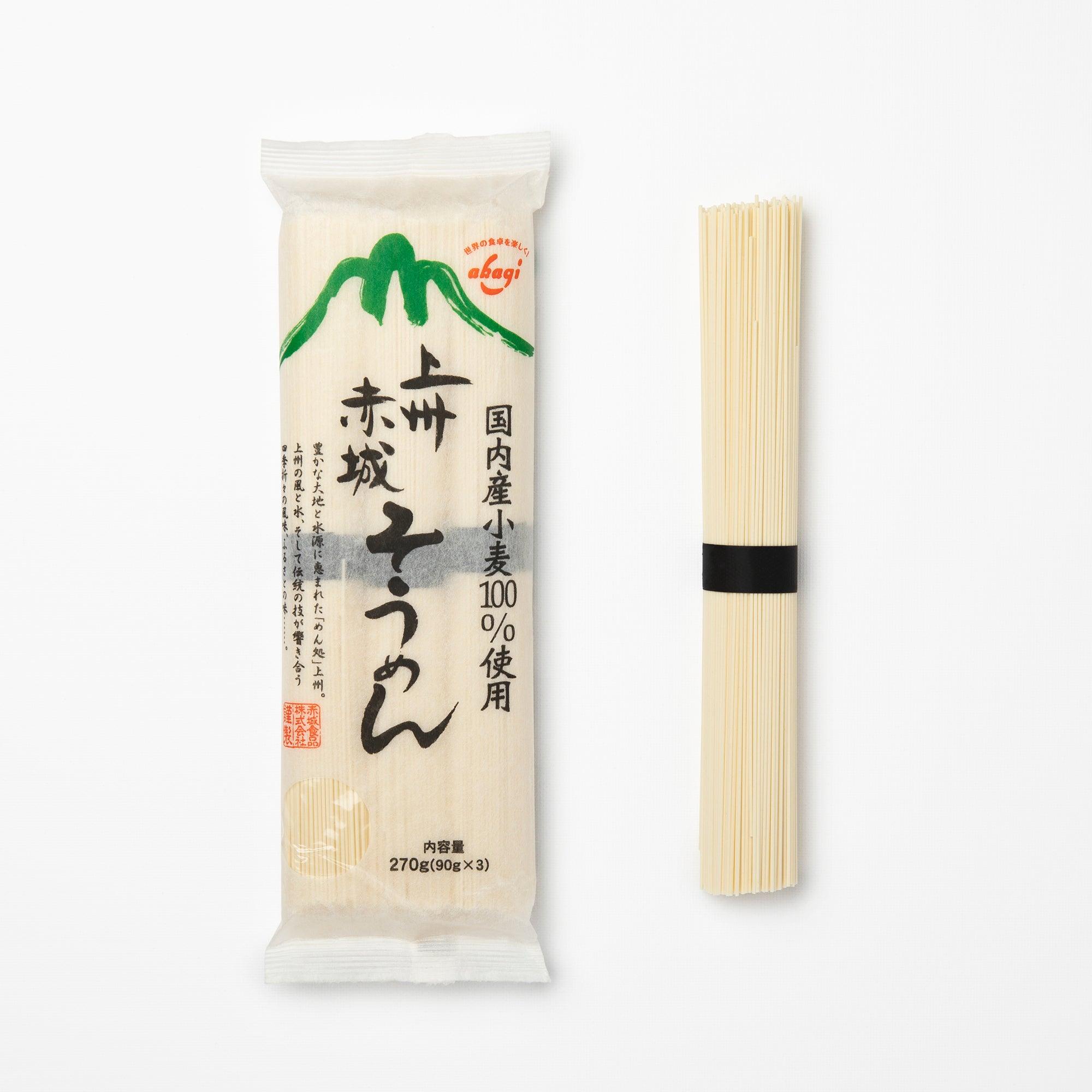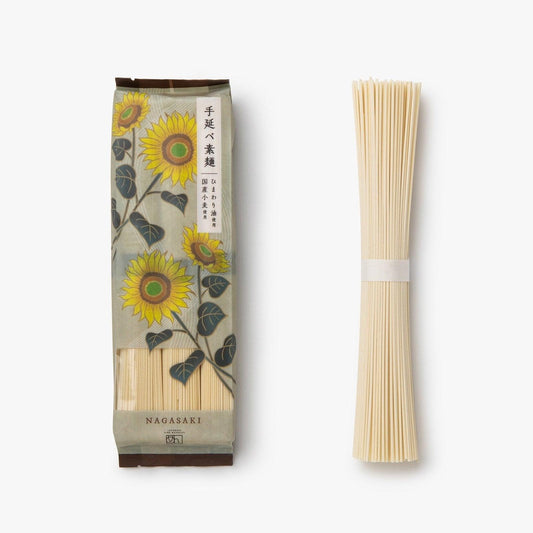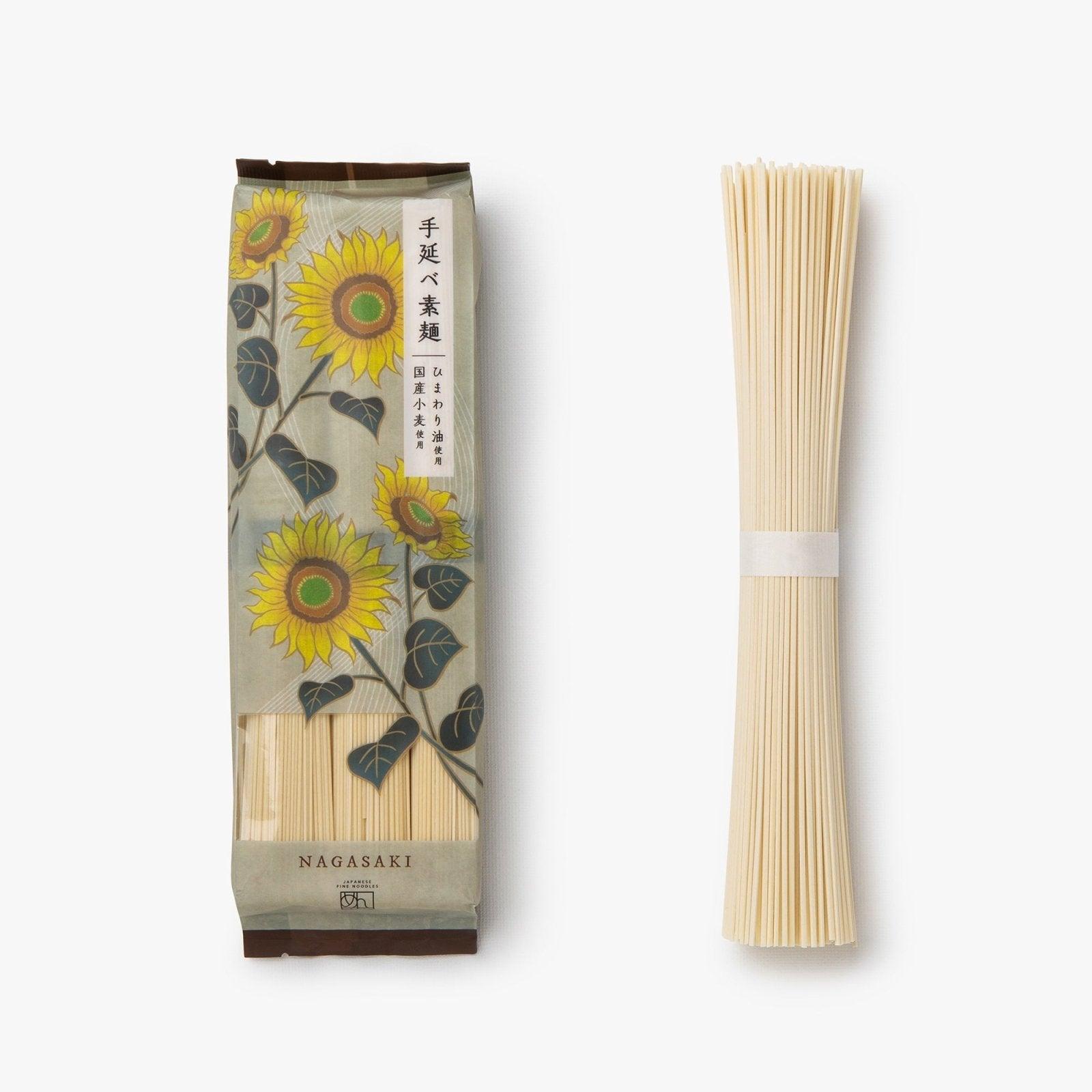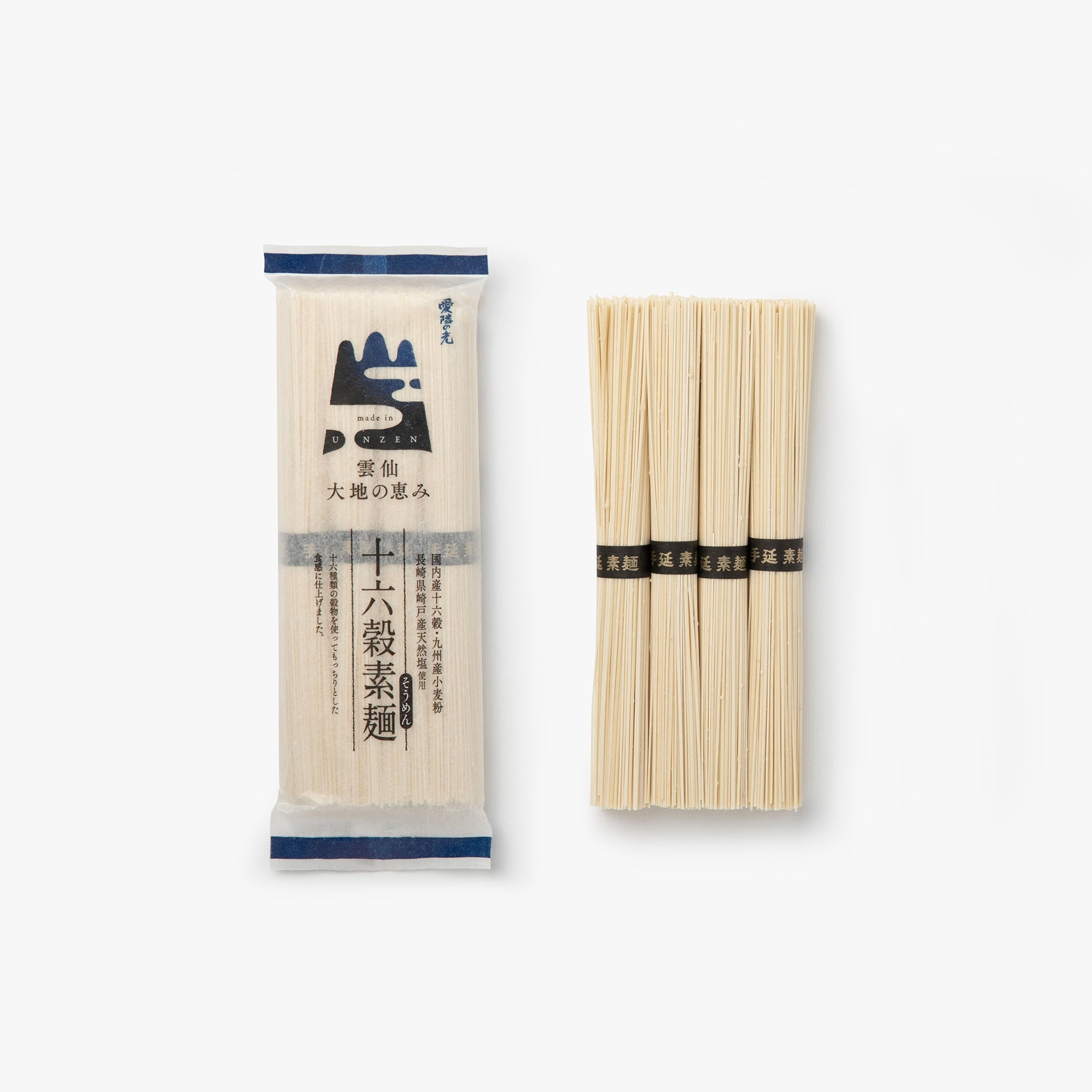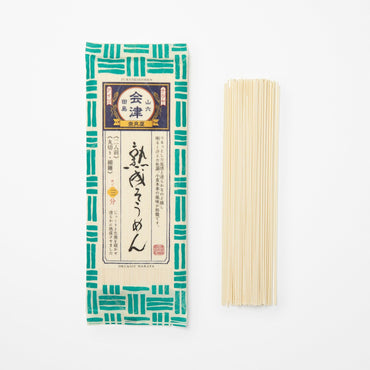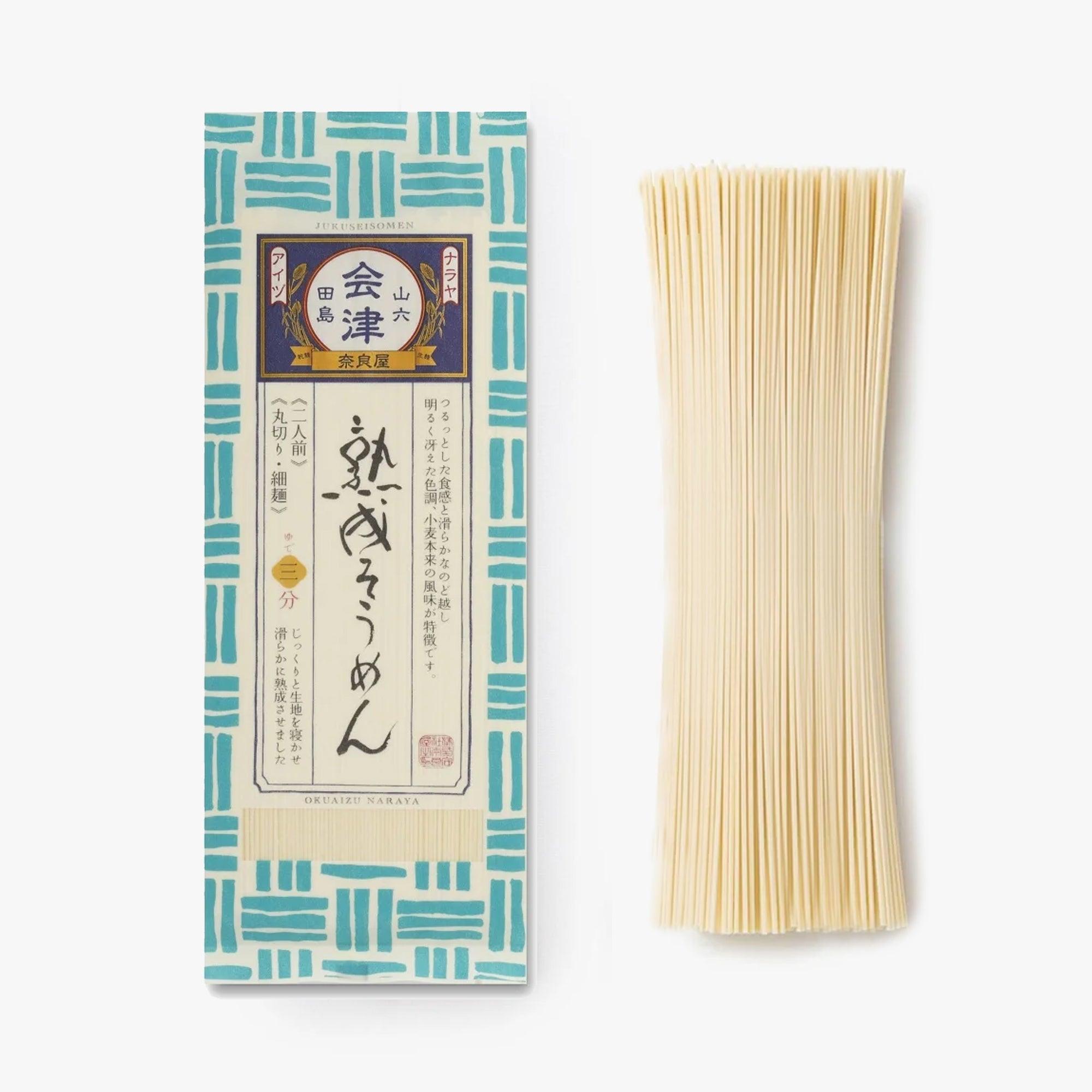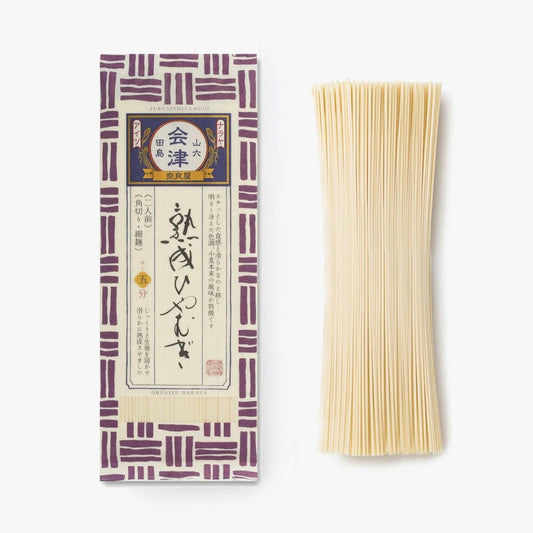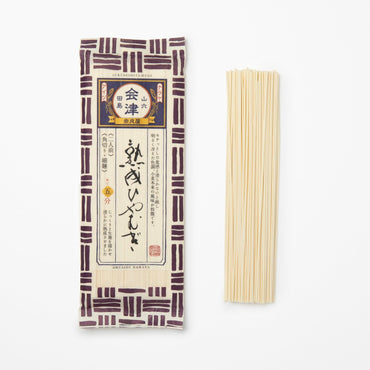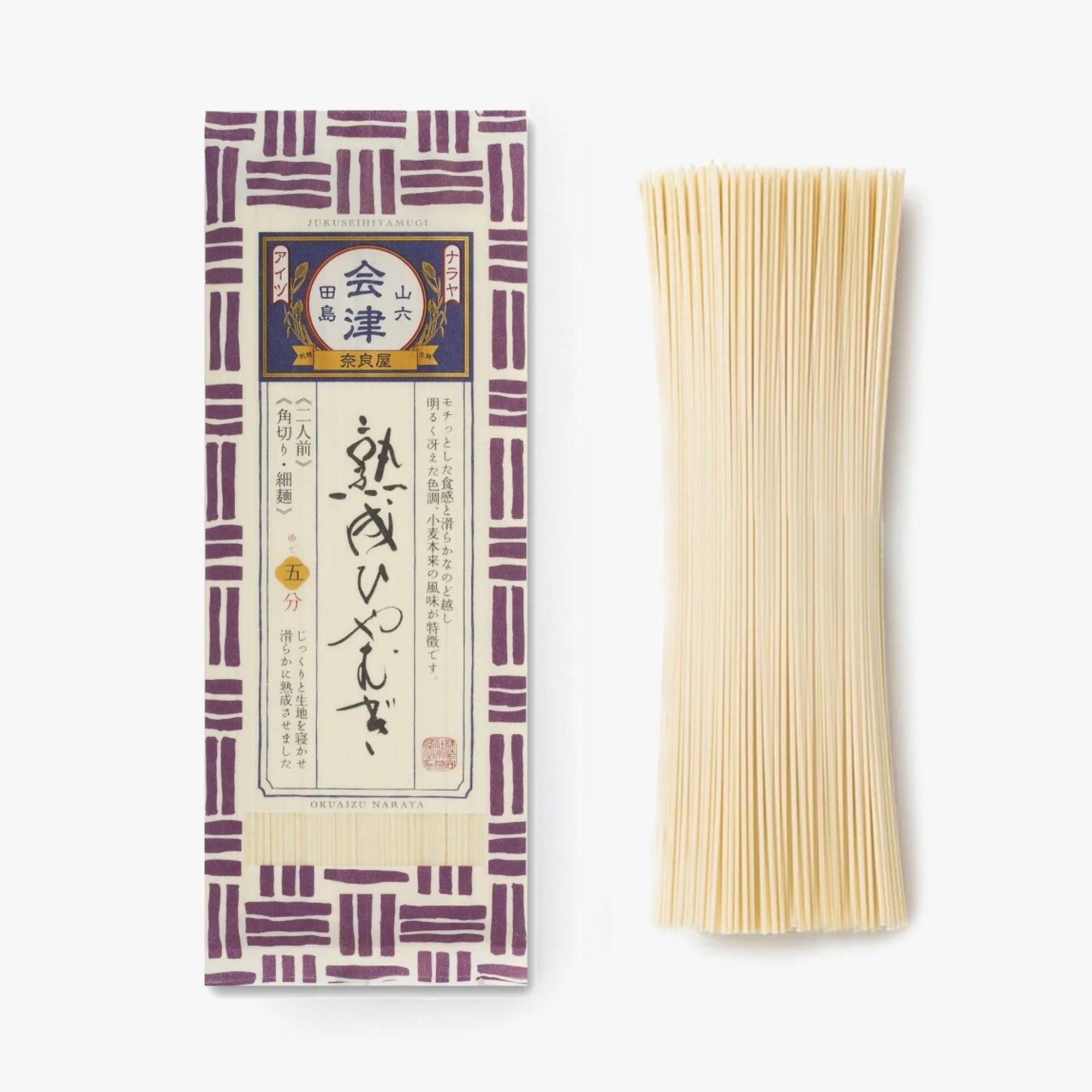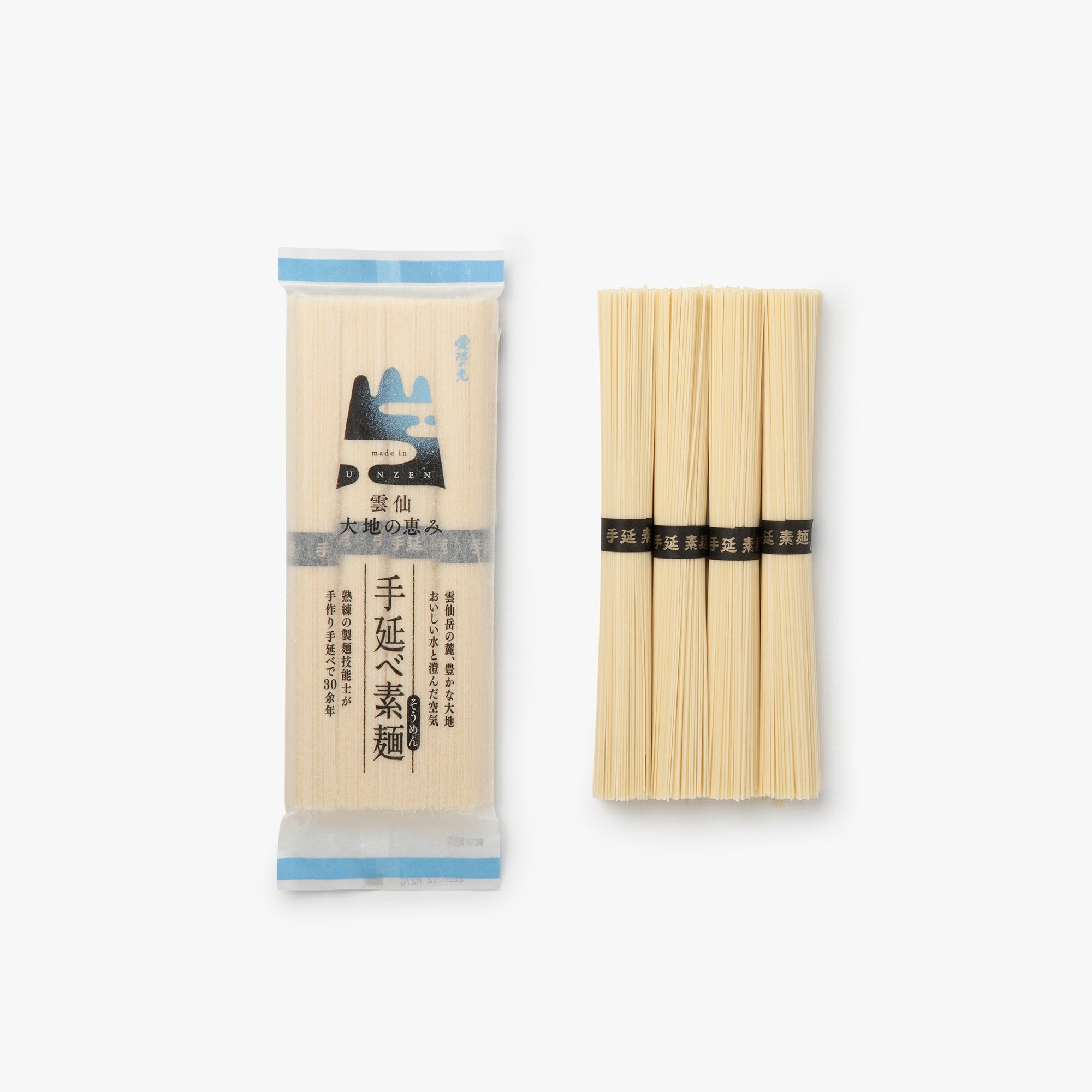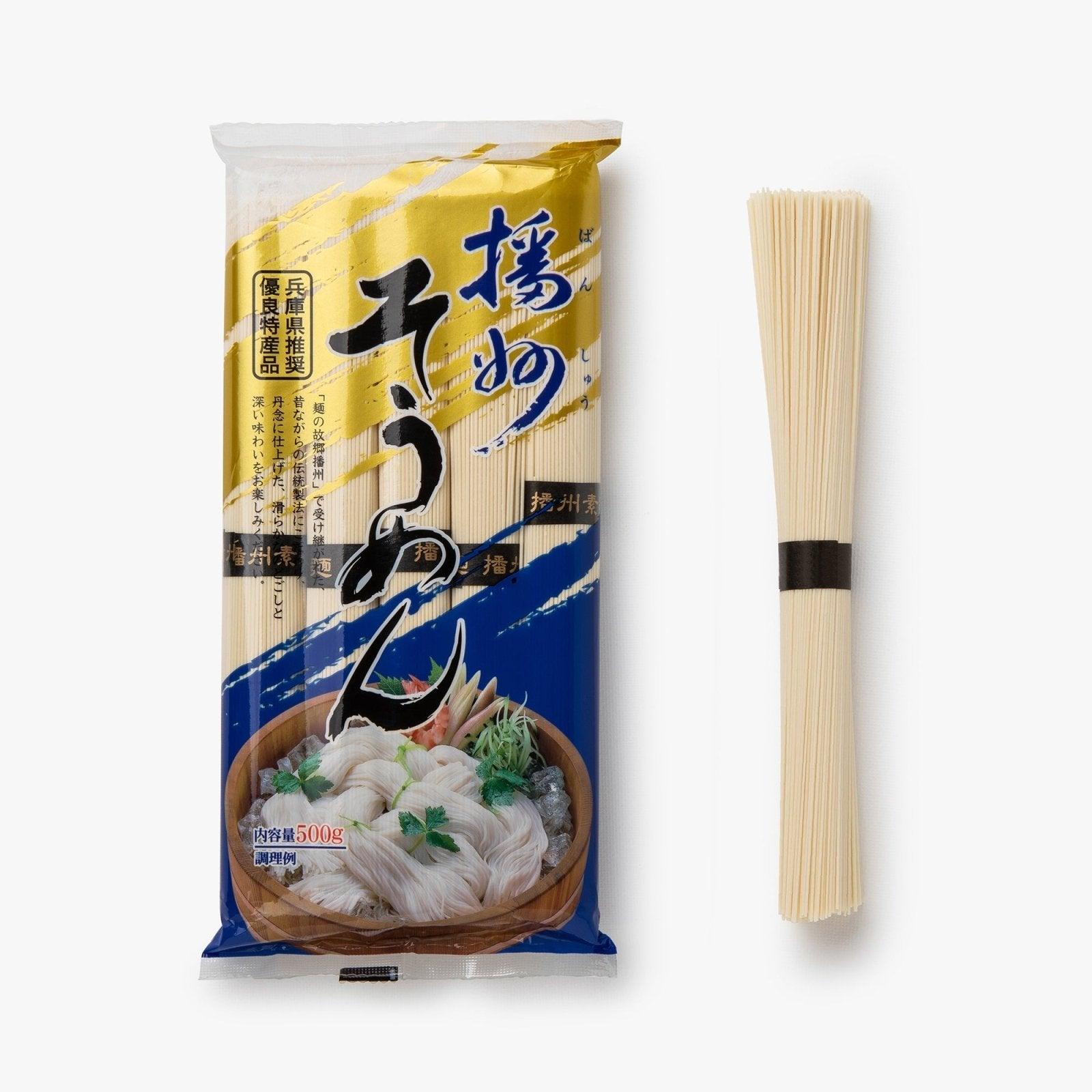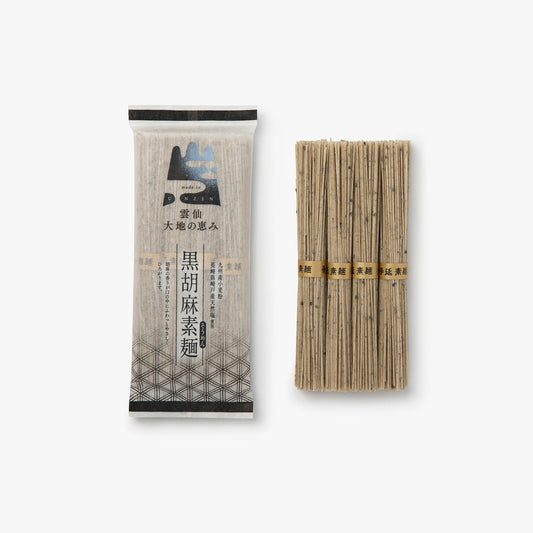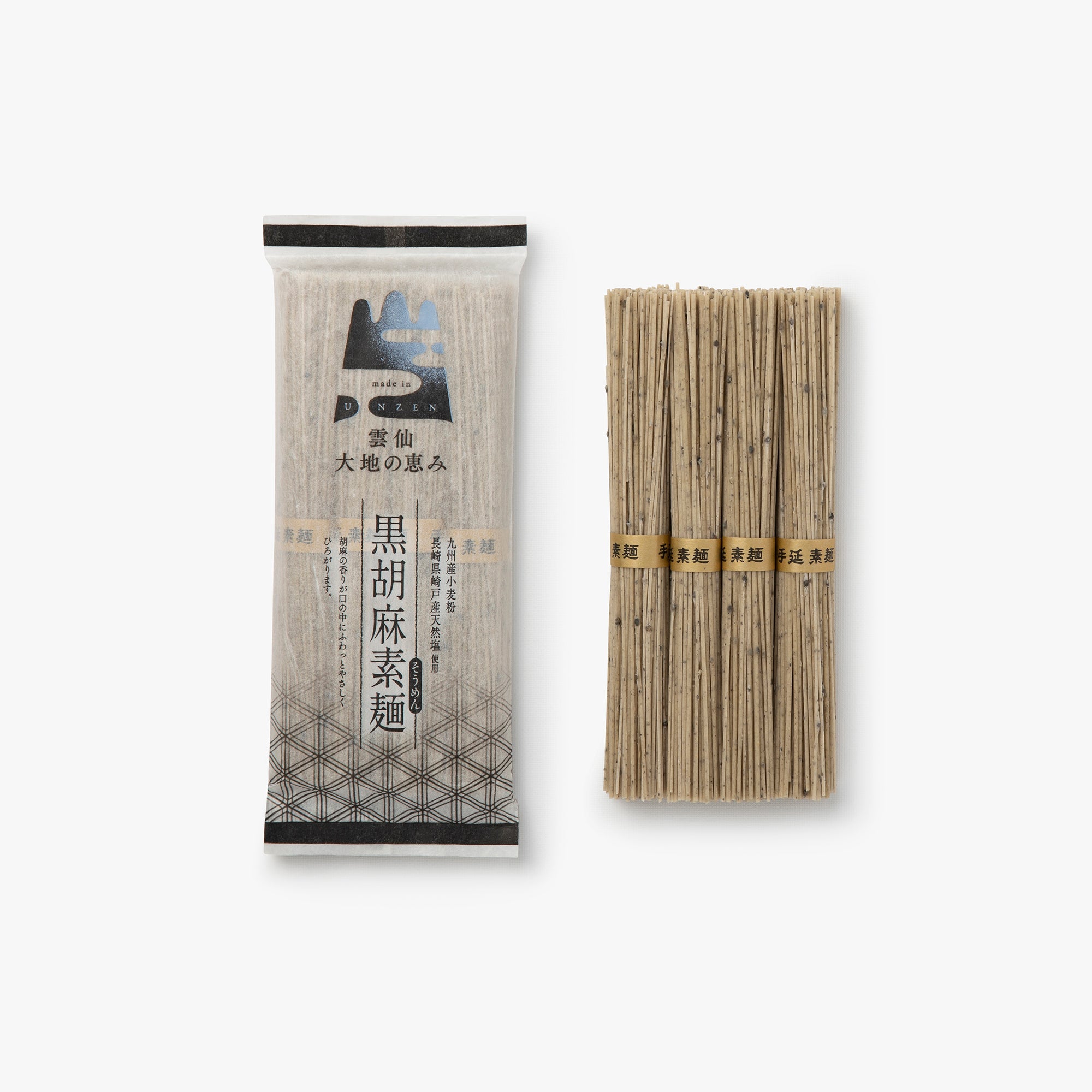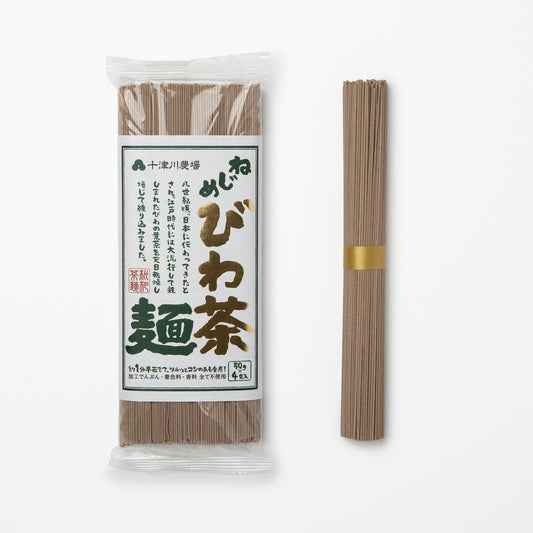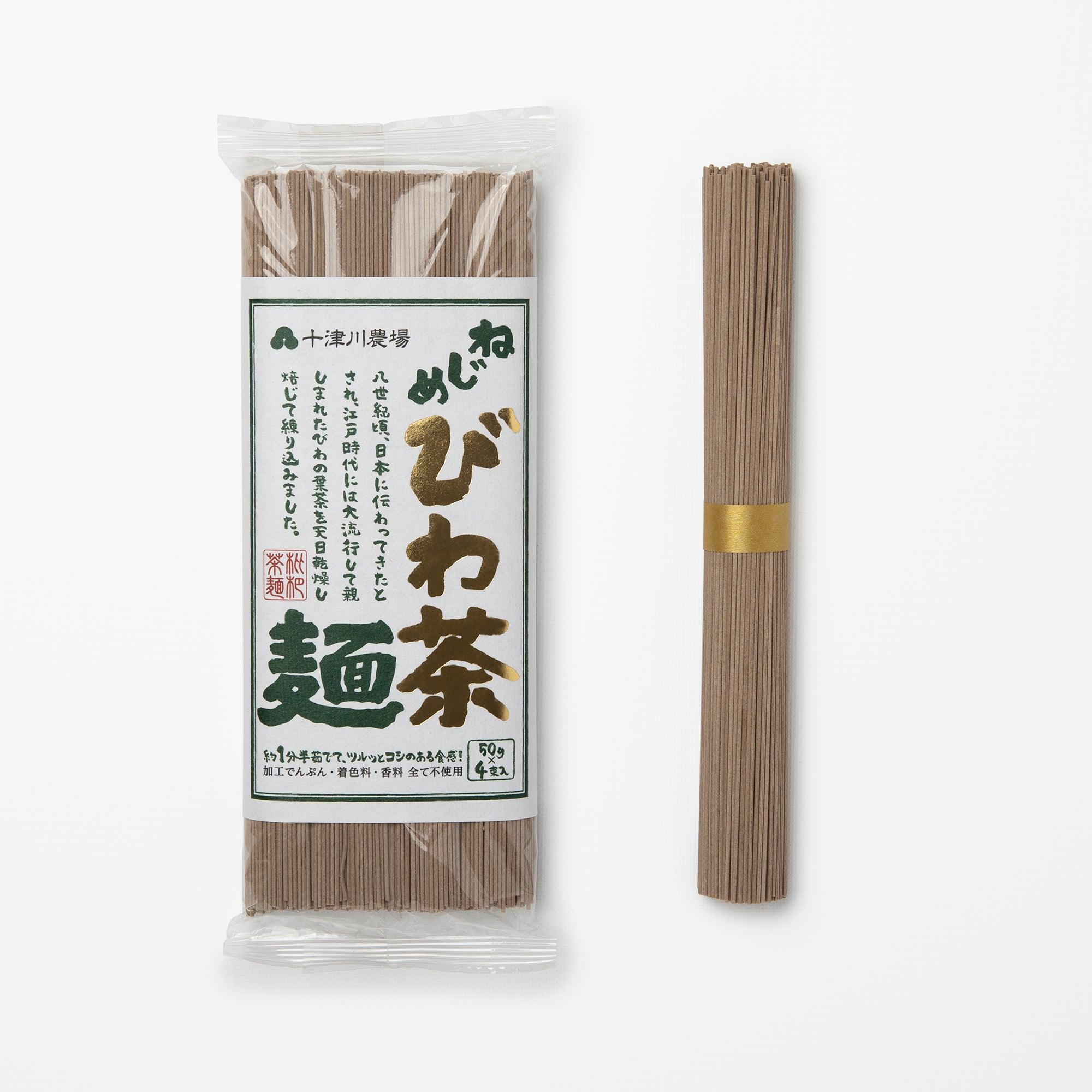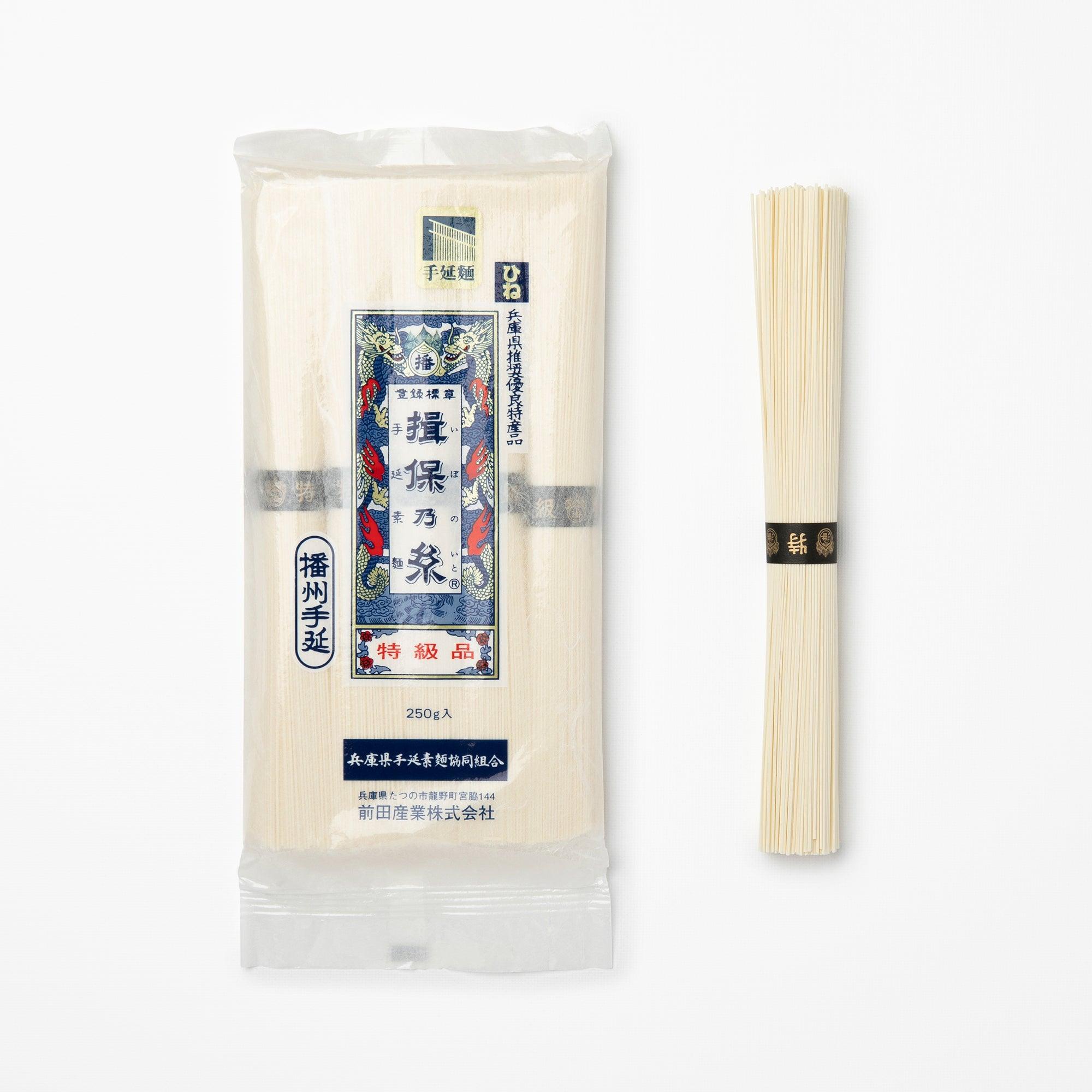Find out more about somen noodles
What is the origin of somen and hiyamugi?
Somen and hiyamugi are Japanese wheat-based noodles, renowned for their finesse and delicate texture. Their origins go back many centuries, with traditions rooted in regions such as Banshu and Shimabara, renowned for their craftsmanship. Somen are made using the tenobe method, where they are hand-stretched withoil and salt, while the slightly thicker hiyamugi follow a similar process. These thin noodles are particularly appreciated in Japanese cuisine, especially served cold with tsuyu sauce or in hot soup.
Why are the hiyamugi slightly thicker than the somen?
Hiyamugi are slightly thicker than somen due to their method of manufacture and official classification in Japan.
Somen, traditionally drawn by hand using the tenobe technique, have a diameter of less than 1.3 mm, while hiyamugi, produced by a similar process but sometimes also cut mechanically, measure between 1.3 mm and 1.7 mm.
This difference in thickness influences the texture: somen are more delicate and melt-in-the-mouth, while hiyamugi offer a slight extra chewiness. Both remain ideal wheat noodles to be enjoyed cold with tsuyu sauce or in hot soup.
Which sauce or broth to use with somen and hiyamugi?
To accompany somen and hiyamugi, which are fine Japanese noodles, several sauces or broths can be used, depending on the time of consumption (hot or cold) and your preferences:
- Cold dashi broth: A light dashi-based broth (made from fish and kombu seaweed) is often used, especially in summer. This broth, served cold, can be seasoned with soy sauce, mirin and a little sugar.
- Sweet soy sauce (tsuyu): A blend of dashi, soy sauce and mirin, this sauce can be diluted with a little cold water for a lighter texture. Perfect for dipping noodles.
- Hot miso broth: For a hotter option, miso broth is a good alternative. You can add vegetables or pieces of meat to enrich the taste.
- Yuzu sauce: For a fruitier, tangier touch, yuzu (Japanese citrus) sauce can be used to add freshness and complexity, especially to cold dishes.
What are the best toppings to go with these noodles?
Somen and hiyamugi can be accompanied by a variety of toppings, which add texture and complementary flavours.
- Chives (negi): Finely chopped chives are classic for adding crunch and a fresh, slightly spicy flavor.
- Grated ginger: A little grated fresh ginger adds a touch of spiciness and freshness, particularly pleasant with cold sauces.
- Tempura: Shrimp or vegetable tempura (zucchini, sweet potato, etc.) can be added for a crunchy texture that contrasts nicely with the sweetness of the noodles.
- Soft-boiled or poached egg: A soft-boiled or poached egg, with a runny yolk, is an excellent addition for a creamy, delicate touch.
- Nori: Small sheets of nori (dried seaweed) cut into thin strips add umami flavor and a touch of the sea.
- Coriander or shiso: For a fresh, slightly more herbaceous taste, shiso or coriander leaves can be used. Shiso, in particular, is a very popular ingredient in Japanese cuisine.
- Grated daikon: Grated daikon, a Japanese white radish, is a traditional accompaniment that adds a touch of freshness and lightness.
- Toasted sesame: A little toasted sesame (black or white) can be sprinkled on to add texture and a subtle nutty flavour.
- Chashu (braised pork): For a heartier filling, chashu (braised pork) can be used to accompany the noodles, especially in hot somen versions.
Do they contain gluten?
Yes, somen and hiyamugi do contain gluten, as they are made mainly from wheat flour. Gluten is a protein naturally present in wheat and other cereals, which gives the noodles their elastic texture and consistency. If you're gluten-sensitive or following a gluten-free diet, there are gluten-free alternatives based on rice, corn or buckwheat (such as gluten-free soba noodles).
Can cooked somen or hiyamugi be frozen?
Yes, you can freeze cooked somen or hiyamugi, but you need to take a few precautions to maintain their texture and quality. Here's how to do it:
- Cool quickly: After cooking the noodles, it's important to cool them immediately under cold water to stop the cooking process and prevent them from becoming too soft.
- Drain thoroughly: Make sure noodles are well drained before freezing. If they are too wet, they may stick together once frozen.
- Separate portions: Divide noodles into individual portions before freezing. This will allow you to defrost only the quantity you need.
- Airtight packaging: Place noodles in a freezer bag or airtight container to prevent them from absorbing odors from the freezer and to prevent freezer burn.
- Quick freeze: Freeze quickly to preserve texture.
Defrosting :
To defrost the noodles, you can leave them to thaw in the fridge, or plunge them directly into hot water to reheat them quickly without losing their texture.
Note that although freezing is possible, the texture of the noodles may change slightly after thawing, and they may become a little softer than when fresh.
What's the difference between hand-drawn and machine-drawn noodles?
The secret lies in the ratio of water to flour in the dough.
Machine-made noodles generally contain around 40% water, while hand-drawn noodles contain around 50%. It is very difficult to obtain a ratio higher than 50%, even when working with hand-drawn noodles.
Water enables the formation of gluten in the dough, which gives the noodles their elasticity and adherence.
What's more, the higher the water ratio, the faster the noodles will be rehydrated, significantly speeding up cooking time and reducing the risk of noodle damage.














